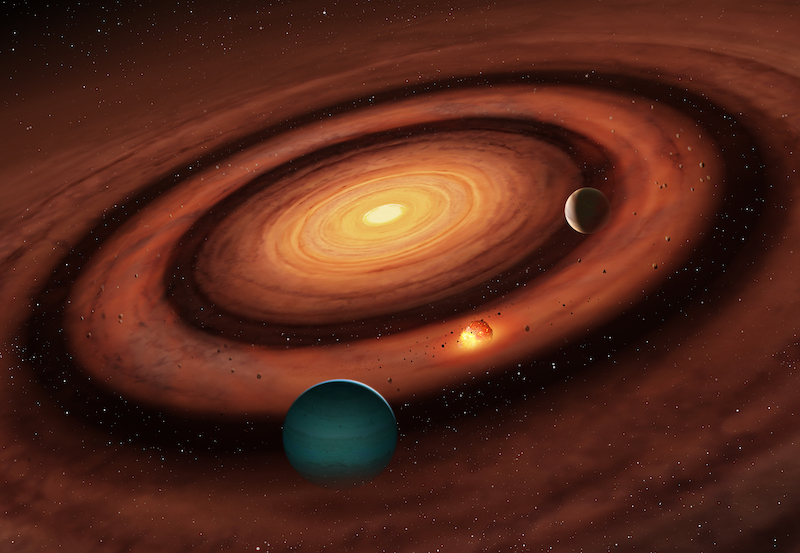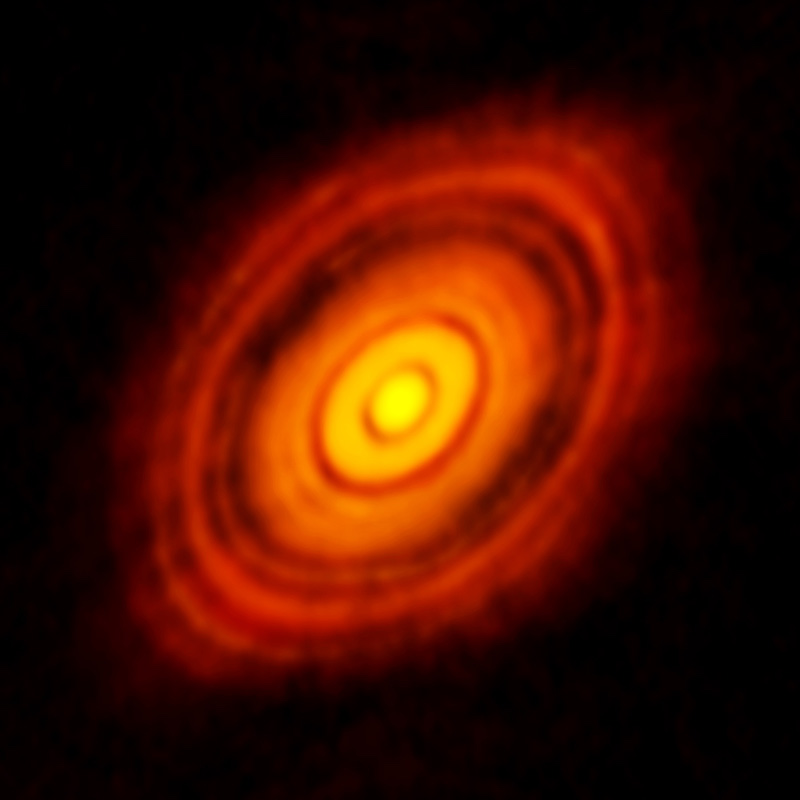
As in our own solar system billions of years ago, exoplanets are thought to form in huge disks of dust and gas swirling around newly forming stars. Scientists call them protoplanetary disks. But many questions remain about the specific processes involved, including processes that form small rocky planets, such as Earth. In early July 2023, researchers at the University of Warwick in the U.K. said they’ve now observed a previously unknown aspect of planet formation. In a study of protoplanetary disks, the researchers found that small planets can sometimes form between two much larger planets. They call them “sandwich exoplanets.”
The researchers presented their findings at the National Astronomy Meeting 2023 in Cardiff, Wales, on July 3, 2023.
They’ve also submitted their results to the journal Monthly Notices of the Royal Astronomical Society.
Sandwich exoplanets
So imagine two large planets, such as the gas giants Jupiter or Saturn in our solar system, forming in a distant protoplanetary disk (a disk where new planets are forming). Two big worlds forming in the disk would have strong-enough gravity to restrict the amount of dust that flows between them. So there’d be much less dust between those two big planets than elsewhere in the disk.
And that means that if another planet is able to form from that dust, it’ll necessarily be smaller than the two giant worlds. That’s what these astronomers are calling a “sandwich exoplanet.”
As Farzana Meru at the Department of Physics at the University of Warwick explained:
In our study, we propose the rings as sites of planet formation; specifically, that there are sandwiched planets currently being formed in those [gaps].
This is very different to the conventional view of planet formation, where we typically expect that the planets form sequentially from the inside to the outside of the disk and get more and more massive further out.
What is also really interesting is that there are examples that we have found from exoplanet observations that actually show this sandwiched planet architecture, where the middle planet is less massive than its neighbors …

New images of planetary formation
Scientists have come a long way in recent years in understanding how planetary systems form. Notably, this includes new high-resolution images of protoplanetary disks. The Atacama Large Millimeter Array (ALMA) captured one such image – of the newly forming star HL Tau – in 2014 (see the image above).
In that image, you can clearly see the gaps in the disk where planets themselves are forming. Meru explained:
The field of planet formation has been revolutionized recently. High-resolution images of planet-forming disks have come out in the last 10 years since a new sophisticated telescope (the Atacama Large Millimeter/submillimeter Array) started observing the night sky.
These images have given us clues about how planets form and evolve; it’s exciting to be at the forefront of this research.
Bottom line: Scientists say they have discovered a new type of planetary formation called “sandwich exoplanets.” This is where a small planet will form between two large ones.











